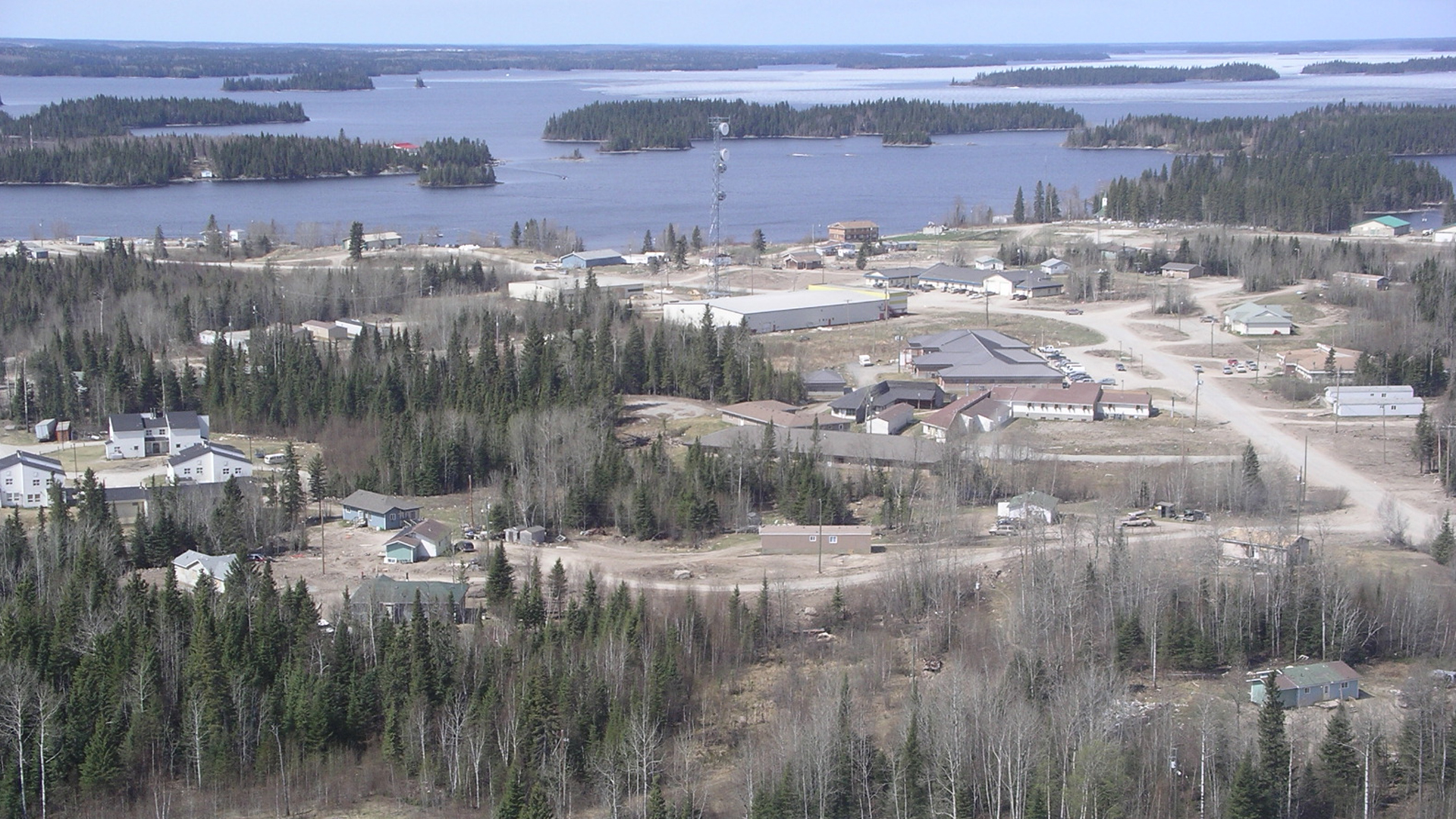It is hard to imagine that in 2019, First Nations in Canada could lack access to clean drinking water in their own territories — but many do. In fact, 400 of 618 First Nations were under at least one water advisory between 2004 and 2014. A recent CBC investigation revealed that 180 homes in Garden Hill First Nation, Manitoba, lack running water and indoor plumbing. Some of the residents don’t have central heating or power either.
How many Canadians would settle for water infected with fecal matter, sewers backing up into their bathtubs or being able to bathe only once a week due to lack of access to water? In all likelihood, if this were happening in any Canadian municipality on the same scale as in First Nations, a state of emergency would be declared and all resources would be brought to bear to address the crisis. While some First Nations have seen their advisories lifted, others have seen little substantive action. If recent statements from federal officials are any indication, even Garden Hill is unlikely to have its water crisis addressed any time soon — or at all.
Michel Burrowes, a deputy director at Indigenous Services Canada, bluntly refused to commit to funding to alleviate the water crisis in Garden Hill and instead told the CBC, “Frankly, people should be living in other places.” It is ironic that the same government that pledges reconciliation with Indigenous peoples would be so quick to suggest that First Nations should simply abandon their homes instead of addressing the water crisis. This callous response to an urgent public health crisis that has affected so many First Nations is not only irresponsible; it shows a real racism and indifference toward the health and well-being of First Nations people in general, and the crisis in Garden Hill specifically.
These attitudes are particularly astonishing because the water crisis is entirely of Canada’s own making. Critics of Indigenous communities can’t lay this issue at the feet of First Nations. The federal government assumed legal responsibility for “Indians and lands reserved for Indians” under section 91(24) of the Constitution Act, 1867. It can’t spend decades controlling First Nations and then claim the right to ignore some constitutional obligations because they cost too much. The federal government is legally responsible for infrastructure on-reserve, and its failure to uphold these legal obligations is a significant liability on its part — and a real health crisis for First Nations.
While this response is revealing, it is not at all surprising. In fact, Burrowes’ response is similar to those made by previous Conservative governments and seems to be wholly in line with Canada’s historic “Indian policy” in general. For decades, the focus of the federal government has been how to best manage the “Indian problem” in light of the fact that its policy objective has always been to acquire First Nations lands and resources and reduce the financial obligations it has acquired through treaties and other agreements. Justin Trudeau’s father tried to erase the Indian problem through the Liberals’ 1969 White Paper, where he advocated no Indian Act, no reserves, no Indians and no more treaties.
The Conservatives’ “Buffalo Jump of the 1980s” — a 1985 secret memo to cabinet on Indian policy — had a similar agenda and included financial cuts to essential programs like health and housing to act as disincentives and encourage people to move off-reserve. Successive Liberal and Conservative governments have literally tried to starve First Nations into submission. And it has worked to some extent. First Nations are the most impoverished people in Canada — a crisis noted by United Nations human rights bodies on many occasions.
Ottawa also doesn’t track homes and community buildings that are not connected to a public water system: in other words, communities or homes that don’t have access to running water don’t get included in the advisory counts.
Even getting a handle on the true severity of the crisis is difficult when the federal government plays shell games with reporting on water advisories. For example, the government might report on the number of water advisories lifted, but then it fails to note the number of advisories that had to be reinstituted on those same First Nations. The federal website counts advisories only for First Nations south of 60, and it doesn’t track First Nations in BC and parts of Saskatchewan. Ottawa also doesn’t track homes and community buildings that are not connected to a public water system: in other words, communities or homes that don’t have access to running water don’t get included in the advisory counts. So the water safety issues of a community that gets water shipped into contaminated cisterns and not through a so-called public system don’t get counted. We don’t get the full picture.
While Trudeau makes grand announcements about allocating nearly $2 billion over five years to address water advisories on-reserve, what most Canadians don’t know is that this amount is far less than what is needed to address the problem. The Parliamentary Budget Officer’s report on the actual costs estimated that Ottawa is providing at least 30 percent less than what is needed for capital expenditures. The PBO also estimated that operations and maintenance would cost $360 million a year, yet Ottawa is providing only half of that. A national assessment done in 2011 estimated these costs to be much higher, at $419 million a year. Here lies the crux of the problem: you can’t fix infrastructure incrementally. You can’t build a treatment plant and walk away. You can’t fix one leak and leave the rest unaddressed. If you don’t provide enough funding for staffing, training or repairs, the system will not last.
The crisis is a predictable outcome resulting from conscious choices made by federal officials to underfund critical infrastructure.
Imagine if you know that your home needs $1,000 a year in repairs but you budget only $100 a year. When your roof springs a small leak that will cost $800 to repair but you repair only $100 worth, then that water will spread into the ceilings and walls and cause more damage. Over time, the damage to the home will make it cost prohibitive to repair; the home may even become uninhabitable. That is the story of this water crisis — it did not spring up overnight. The crisis is a predictable outcome resulting from conscious choices made by federal officials to underfund critical infrastructure.
What makes matters worse is that this purposeful, discriminatory underfunding has not applied only to water and sewers. This pattern of discrimination can be found across all programs and services, including housing, education, health services and child and family services. Cat Lake First Nation, Ontario, has just declared a state of emergency over its housing crisis, which, it reports, has led to needless illnesses and deaths. This isn’t the first declaration of emergency related to infrastructure in First Nations communities. Attawapiskat First Nation gained national attention when it declared a state of emergency over lack of housing. Of the 63 First Nations in Manitoba, 53 are plagued by mould in addition to housing shortages. The mould, water and housing crises are all problems created by the federal government’s chronic discriminatory underfunding — which continues despite the known impact on the health and lifespan of First Nations people.
Cindy Blackstock took Canada to the Canadian Human Rights Tribunal for discriminating against First Nations children in foster care and their families by knowingly underfunding child and family programs. She won, but the tribunal has been trying to get the federal government to fully comply with its compliance orders ever since, even though Canada’s own internal documents reveal that the government knows underfunding is a root cause of child apprehension rates in First Nations. Similarly, the chronic lack of funding for housing on-reserve has also created a crisis — one that auditors general have raised on more than one occasion. Federal funding for on-reserve housing does not keep up with population growth, inflation or the actual costs of constructing homes in remote or northern First Nations. As a result, more than 26 percent of all homes on-reserve are in need of major repair, some homes are uninhabitable and thousands have sat on waiting lists for homes for decades.
Federal officials are now using the housing crisis that they created as a reason to not provide water and sewer services. Burrowes told the CBC that the federal government will not connect water and sewer services to homes that are uninhabitable or lack power. Incredibly, the federal government is pointing to the devastating results of discriminatory underfunding in the housing program as a reason to not address the water crisis also created by discriminatory underfunding. To make matters worse, although the federal government will be conducting a review of the water issues in Garden Hill First Nation, the homes that currently lack running water and sewer service will be specifically excluded from the review. Government policy decisions are supposed to be evidence based. How can officials address the water crisis if they close their eyes to the full scope of the problem?
What is needed here is to declare a national state of emergency and establish a tripartite emergency measures team. This issue must be treated like the public health crisis that it is. Because the health that is at risk is that of First Nations people, First Nations have to be at the forefront of the emergency plan to address the situation. Every resource should be brought to bear to get running water and sewer service to those First Nations without them, and to ensure safe water for those who have running water. There is no reason why Canada, the provinces and First Nations cannot lead an emergency plan to have this done within 18 to 24 months. If Trudeau can find $7 billion (plus operating and maintenance costs) to buy a pipeline, he can find the same amount to ensure that First Nations have access to clean water and sanitation. This is a basic human right.
At the same time, it is critically important to address the other policy issue: federal control over First Nations. First Nations’ jurisdiction to govern themselves must be recognized in a substantive way. Returning lands, waters and resources to First Nations, as well as addressing outstanding treaty obligations, would go a long way to ensuring that First Nations have sustainable governments. Canada needs to get out of the business of governing First Nations. Running that business means skimming funding off the top of monies appropriated for First Nations by Parliament each year, in order to fund the thousands of employees who work at Indigenous and Northern Affairs Canada and their communications, security, water, buildings and other infrastructure. There is no reason why funds for First Nations can’t be transferred directly to First Nations to manage their own programs and services — including the funding owed from treaty obligations not yet honoured.
The water crisis was created by Canada and has been maintained by Canada for decades, with devastating but predictable outcomes. This form of racism has real-life consequences for First Nations. It’s time to make all those land acknowledgements mean something. It’s time to start living by the spirit of the treaties: mutual respect, mutual protection and mutual benefit. It’s time to show a real sign of good faith and end the water crisis on reserves now. It’s a matter of life and death for First Nations.
Photo: Garden Hill First Nation. Photo by Timkal/Wikimedia Commons.
Do you have something to say about the article you just read? Be part of the Policy Options discussion, and send in your own submission. Here is a link on how to do it. | Souhaitez-vous réagir à cet article ? Joignez-vous aux débats d’Options politiques et soumettez-nous votre texte en suivant ces directives.








